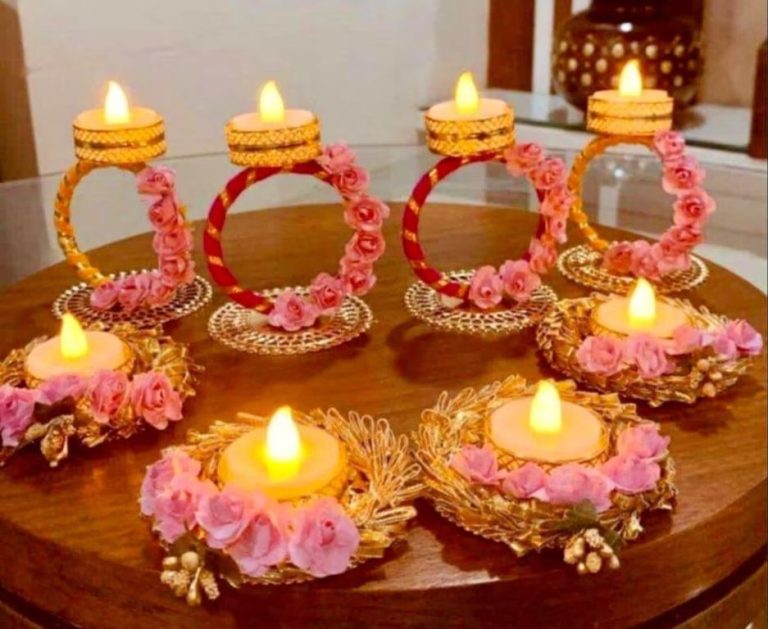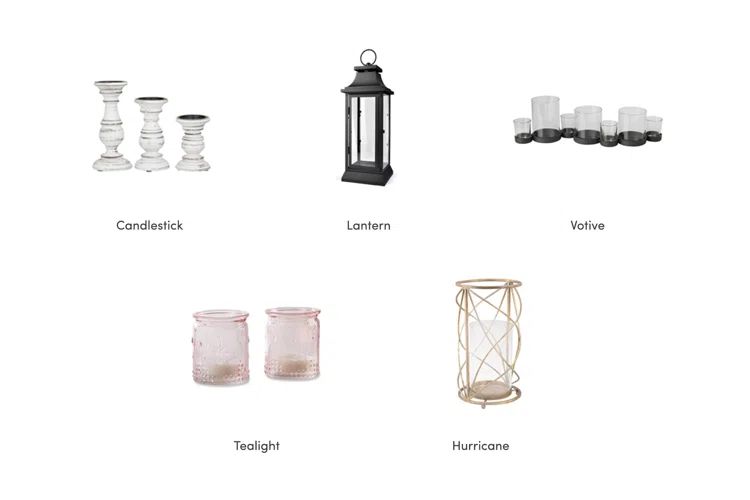Why Is A Candle Called A Candle?
Etymology of ‘Candle’
The word “candle” has its origins in Old English and can be traced back to Old Saxon “candela,” which refers to a burning torch. It is also related to the Latin word “candēre,” meaning “to shine or glow.”
The earliest written usage of “candle” in English dates back to the year 885 AD in a text called the Lindisfarne Gospels. This text used the Old English word “candel,” indicating a source of light made from a wick and some form of fuel, likely animal fat at this early stage. The spelling “candle” emerged around 1000 AD in Middle English and Old English texts.
The first candles were developed as an alternative indoor light source to torches and oil lamps. The English word referenced both the source of light itself as well as the act of burning or fueling a candle. Early examples indicate “candle” was used both as a noun referring to the object, as well as a verb meaning the process of maintaining candle light.
Early Candle Materials
Candles have been used for light and to keep time for thousands of years. Early candles were made from available materials like animal fat, beeswax, and plant oils.
One of the earliest candle materials was animal fat. As early as 3000 BC, Egyptians used rendered animal fat to fuel candles for lighting. The wick was made of plant fibers like flax or rush plants. Later tallow was made by rendering beef or mutton fat and became a common candle material in Europe and America.
Beeswax was another early candle material used for centuries. Beeswax candles were more expensive but burned cleaner and brighter than animal fat candles. Beeswax remained an upper class candle material in Europe until the 19th century.
Plant oils like palm, olive, and nut oils were also used for candlemaking throughout history. In India and China, candlemaking used oils from plants like jojoba and castor beans. Plant based candles were cleaner burning than animal fats.
Wick Invention
The wick is an essential component of candle design that was added sometime in the Middle Ages. Before wicks, candles were made by dipping and molding combustible materials like animal fat and beeswax around a stick or cord. However, these early candle designs produced a lot of smoke from the incomplete combustion of the fuel. The invention of the wick revolutionized candles by providing a strand through which the melted wax could climb up and vaporize at the lit end. This innovation optimized air supply to the flame, allowing for full combustion and much less smoke. While the exact origins are unknown, wicks were a pivotal advancement that paved the way for candles as we know them today.
Candle Molding
Candles have been molded into various shapes since their early history as tallow and beeswax products. While open candles were made by repeatedly dipping wicks in molten wax or fat, molded candles required special tools and techniques to obtain unique shapes. Some basic methods for candle molding include:
Pillar and votive molds – These metal molds, often made of aluminum, are used to produce cylindrical candles by pouring liquid wax into the mold cavity. The mold is opened after the wax has cooled and solidified.
Multi-wick molds – For sculpting candles with multiple wicks and wick hole channels, plastic or silicone molds are commonly used. The wick tabs and wicks are inserted first before filling the mold with poured wax.
Carved wax molds – Hand-carved molds formed of wax, plaster, soapstone or other materials create detailed custom candle shapes. Liquid candle wax is poured into the mold to make a perfect impression.
Pressed wax sheets – Thin sheets of candle wax can be cut into shapes and designs, rolled into tubes, and assembled to produce molded candles with intricate patterns and layers.
Novelty molds – To achieve popular novelty shapes like fruits, animals or holiday symbols, flexible plastic or silicone molds are utilized. Whimsical candles can be easily formed this way.
3D printed molds – With 3D printing technology, unique one-of-a-kind candle molds can be printed to the exact specifications needed for creative molded candles.
Industrial Candle Production
The industrial revolution brought major advancements in candle manufacturing through mechanization and new production techniques. Candlemakers were able to increase their output exponentially by utilizing brass candle molds on conveyor systems. Wax could be melted in large vats, enabling bulk production. Machines automated wick braiding and candle wicking, replacing tedious hand work. Paraffin wax, derived as a petroleum byproduct, became the preferred candle wax for its inexpensive cost, hard texture and high burning temperature. By the mid-19th century, most candles were mass produced in factories using casting and extruding machines. Major manufacturers like Pratt & Co. utilized economies of scale to churn out millions of candles per year. The efficiency of factory candle production significantly dropped prices and made candles affordable commodities for the general public. While reducing labor costs, industrialization removed much of the artistry from candle making. However, some boutique candle makers kept alive handcrafting methods. The mechanization of candle manufacturing was a key step in the evolution of candles from luxury goods to inexpensive household items.
Modern Candle Materials
In modern times, most candles are made from paraffin wax, a byproduct of petroleum refining. Paraffin wax is inexpensive, burns cleanly, and can be easily molded which makes it ideal for candle making. Here are some of the most common materials used to make candles today:
Paraffin Wax – The most widely used candle wax. It comes from petroleum refining and is a smooth wax that holds color and fragrance well. Paraffin candles burn slowly and cleanly.
Beeswax – Beeswax has been used in candle making for centuries. It has a natural honey color and sweet scent. Beeswax candles burn brighter and longer than other waxes.
Soy Wax – An eco-friendly alternative made from hydrogenated soybean oil. Soy wax burns slowly, doesn’t release toxins, and is biodegradable.
Gel Wax – A translucent, rubbery wax made by adding polymers to mineral oil. Gel candles incorporate decorative items and burn for a very long time.
Palm Wax – Harvested from palm trees, this natural wax has a high melting point and makes durable candles.
Other natural waxes like coconut, bayberry, and tallow are also used in modern candle making, often blended with paraffin to create unique properties and scents.
Candle Design Innovations
In recent decades, candle makers have innovated countless new candle designs that make them more decorative, longer-lasting, and tailored to specific uses.
One popular innovation is container candles, where the candle wax is encased in glass or other materials, rather than being freestanding. This helps the candle last longer, contains the melting wax, and allows for creative container shapes and decorations.
Candle makers also experiment with new wax blends and dyes to create candles in any color imaginable. Layered candles stack differently colored waxes for unique effects as the candle burns down.
Scented candles infuse the wax with essential oils and fragrances, letting people fill a room with pleasant aromas while the candle burns. Candle makers carefully formulate their scented candles to distribute fragrance evenly and avoid scent throw issues.
Novelty candle designs embed items inside the wax, like flowers, seashells, or glitter. These embedded elements get revealed as the candle burns down. Other innovative candle variations include multiple wicks, extra-large pillars, and those designed to float in water.
Thanks to the creativity of modern candle makers, there are more types of candles available now than ever before. Their innovations keep the candle relevant even as electric lighting dominates society, by making candles multifunctional decor and aroma pieces.
Symbolic Meaning of Candles
Candles hold deep symbolic meaning in various cultures and religions across the world. Their warm glow is associated with light, hope, and guidance. The flame of a candle is thought to signify the spark of life and the presence of the divine. Here are some of the prominent symbolic meanings associated with candles:
In Christianity, candles are used to represent Jesus Christ as the “light of the world.” Advent candles mark the weeks leading to Christmas, and altar candles signify Christ’s presence. The Paschal candle used during Easter liturgies represents the resurrection of Christ.
In Judaism, candles are lit on the Sabbath and for holidays like Hanukkah. The menorah holds nine candles, one for each night of Hanukkah, commemorating the miracle of the sacred temple lamp that burned for eight nights on a one day supply of oil.
Hindus light candles and place them on puja altars during ceremonies and festivals as an offering and symbol of enlightenment. Candles also represent the elements of fire, water, earth, air, and sky.
Buddhists often include candles on their shrines as symbolic offerings. Candles represent the light of knowledge and inner flame that guides one’s path to enlightenment.
In Wicca and other pagan traditions, different colored candles correspond to the elements, gods/goddesses, and celebrations like solstices. They are used in spells and rituals for healing, protection, manifestation, and more.
Across many cultures, candles continue to hold spiritual significance and serve as symbols of light in the darkness, hope amid despair, and the presence of the sacred in the profane.
Candle Usage
Candles have served a variety of functions throughout history. Here are some of the main applications of candles over time:
Illumination – Before the advent of electric lights in the 19th century, candles were a primary source of lighting in homes, businesses, and public spaces. Simple tallow candles provided light for early civilizations, while more advanced candles like taper candles and pillars were used in chandeliers, wall sconces, and candelabras to illuminate palaces, churches, and mansions.
Timekeeping – The burning down of candle wicks was used to mark the passage of time. Primitives candles were marked to measure hours, while standardized candle clocks with demarcations for every minute were used in churches, businesses, and homes to organize schedules before modern timekeeping.
Religious ceremonies – Candles have played an integral role in religious rituals, celebrations, and services across faiths including Judaism, Christianity, Hinduism, and Buddhism. Lit candles signify prayer intentions, sacred presences, and holiday observances.
Rituals and magic – Candles are commonly used in magical, occult, and pagan rituals to set intentions, cleanse spaces, manifest goals, and more. Specific colored candles often correspond to different purposes.
Romance and mood-setting – The ambient lighting and fragrance of candles creates a warm, intimate setting for dining or romance. Candles are often given as romantic gifts as well.
Emergencies – Before batteries, candles or oil lamps provided light during power outages and were an essential part of emergency kits. Candles also serve as backup light sources if technology fails.
Decoration – Candles add warmth and atmosphere to interior decorating schemes. Scented and artisanal candles have become popular decorative accents in homes.
Candle Name Variations
While most English speakers refer to the wax light as a “candle”, there are some regional and linguistic variants on this common name.
In parts of New England and the Midwest United States, these lights are often called “taper” or “tapers”, originating from when candles were typically made of wax tapered at one end for inserting into candle holders.
The French word for candle is “bougie”, which entered the English lexicon as a term for a slender wax candle.
In Italy, the word “candela” is used, derived from the same Latin root as “candle.” Other variants exist in Spanish (“vela”), Portuguese (“vela” or “candeia”), and other Romance languages.
In German, the word is “kerze”, in Dutch it’s “kaars”, and in Swedish and Norwegian it’s “ljus/lys” – all Germanic language variants related to the word light.
So while in English we settled on “candle”, many other languages split between words meaning taper, wick, light or candela to refer to this ubiquitous object. But the basic concept spans cultures, proving the candle’s universal role in human history.





